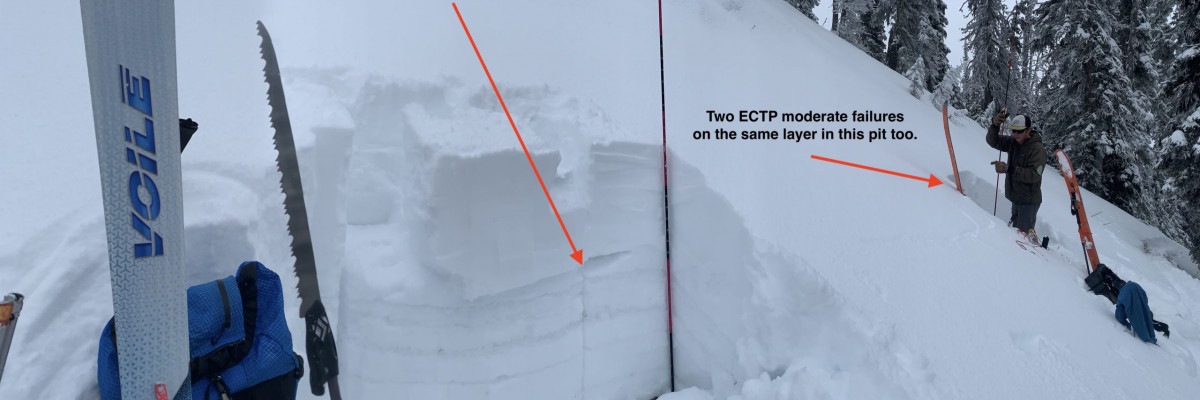December 06, 2019 Snowpack and Avalanche Update
A significant weather event is forecast this weekend for the West Central Montana backcountry. A substantial amount of new snow (favoring the Swans, Missions, and Rattlesnake) and wind are expected. Avalanche danger will increase.
There is a widespread persistent slab avalanche problem in the upper elevations, where a very poor snowpack structure exists across the advisory area. A slab is building on top of very weak facets that developed above the melt-freeze crust from the November 17 warm storm.
This snowpack structure lacks the strength to support significant loading from new snow and wind. Specific upper elevation areas, where the snowpack is deeper, are prone to human-triggered and/or natural avalanches. More widespread upper elevation terrain will become prone to human triggered avalanches with additional loading from new snow and wind.
Wind slab and new snow (storm slab and loose snow) avalanche problems are expected to develop this weekend. Avalanche danger will increase as a result.
The other, very serious, objective hazard across the forecast area is thin snow coverage. Snags (rocks, stumps, deadfall) lurking at and just below the snow surface are widespread. As a result, descent conditions are risky for injury and/or gear damage. The consequences of getting caught in even a small avalanche are also increased: trauma is likely.
This weekend’s weather forecast is for snow and wind: over a foot is possible in the upper elevations (increasing avalanche danger). Winds are forecast from the west initially, switching to easterly mid storm. Wind transport could significantly increase the load on leeward slopes, and multiple aspects may be wind loaded.
Red flags like recent avalanches, collapsing (aka “whumping”), shooting cracks, and rapid wind loading are how the mountains will communicate avalanche danger to you this weekend. Heed their warning!
Ski and ride safe!














